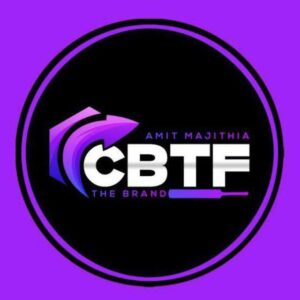
Indirect Taxes Amit Jain
Notes, YouTube videos, MCQs, Discussion group link for doubts solving.
Recent Posts
This is for custom.
For FTP, Please check your email for entire new notes, if not received then contact or DM so that only FTP notes can be shared...
For FTP, Please check your email for entire new notes, if not received then contact or DM so that only FTP notes can be shared...
I communicated to students in May this year, very less and insignificant amendments...
Infact lowest since introduction of GST...
Infact lowest since introduction of GST...
CA Final IDT Part I GST amendment for Nov 2023
*14. What will happen if one cannot deposit/exchange ₹2000 banknote immediately?*
To make the entire process smooth and convenient for the public, a period of over four months has been given for deposit and/or exchange of Rs 2,000 banknotes. Members of the public, are therefore, encouraged to avail this facility at their convenience within the allotted time.
*15. What will happen if a bank refuses to exchange/accept deposit of the Rs 2,000 banknote?*
For redressal of grievance in case of deficiency of service, the complainant/aggrieved customer may first approach the concerned bank. If the bank does not respond within a period of 30 days after the lodging of the complaint or if the complainant is not satisfied with the response/resolution, the complainant can lodge the complaint under the Reserve Bank — Integrated Ombudsman Scheme (RB-IOS), 2021, on the Complaint Management System portal of RBI.
To make the entire process smooth and convenient for the public, a period of over four months has been given for deposit and/or exchange of Rs 2,000 banknotes. Members of the public, are therefore, encouraged to avail this facility at their convenience within the allotted time.
*15. What will happen if a bank refuses to exchange/accept deposit of the Rs 2,000 banknote?*
For redressal of grievance in case of deficiency of service, the complainant/aggrieved customer may first approach the concerned bank. If the bank does not respond within a period of 30 days after the lodging of the complaint or if the complainant is not satisfied with the response/resolution, the complainant can lodge the complaint under the Reserve Bank — Integrated Ombudsman Scheme (RB-IOS), 2021, on the Complaint Management System portal of RBI.
Here are answers to FAQs shared by the RBI:
*1. Why are the Rs 2,000 denomination banknotes being withdrawn?*
The Rs 2000 denomination banknote was introduced in November 2016 under Section 24(1) of RBI Act, 1934, primarily with the objective to meet the currency requirement of the economy in an expeditious manner after withdrawal of the legal tender status of all Rs 500 and Rs 1,000 banknotes in circulation at that time. With fulfilment of that objective and availability of banknotes in other denominations in adequate quantities, printing of Rs 2,000 banknotes was stopped in 2018-19. A majority of the Rs 2,000 denomination notes were issued prior to March 2017 and are at the end of their estimated life-span of 4-5 years. It has also been observed that this denomination is not commonly used for transactions. Further, the stock of banknotes in other denominations continue to be adequate to meet the currency requirement of the public.
In view of the above, and in pursuance of the “Clean Note Policy” of the Reserve Bank of India, it has been decided to withdraw the Rs 2000 denomination banknotes from circulation.
*2. What is Clean Note Policy?*
It is a policy adopted by RBI to ensure availability of good quality banknotes to the members of public.
*3. Does the legal tender status of Rs 2,000 banknotes remain?*
Yes, the Rs 2,000 banknote will continue to maintain its legal tender status.
*4. Can Rs 2,000 banknotes be used for normal transactions?*
Yes, members of the public can continue to use Rs 2000 banknotes for their transactions and also receive them in payment. However, they are encouraged to deposit and/or exchange these banknotes on or before September 30, 2023.
*5. What should the public do with the Rs 2,000 denomination banknotes held by them?*
Members of the public may approach bank branches for deposit and/or exchange Rs 2,000 banknotes held by them. The facility for deposit into accounts and exchange for Rs 2,000 banknotes will be available at all banks until September 30, 2023. The facility for exchange will be available also at the 19 Regional Offices (ROs) of RBI.
*6. Is there a limit on deposit of Rs 2,000 banknotes into a bank account?*
Deposit into bank accounts can be made without restrictions subject to compliance with extant Know Your Customer (KYC) norms and other applicable statutory/regulatory requirements.
*7. Is there an operational limit on the amount of Rs 2,000 banknotes that can be exchanged?*
Members of the public can exchange Rs 2000 banknotes up to to a limit of Rs 20,000 at a time.
*8. Can Rs 2,000 banknotes be exchanged through Business Correspondents (BCs)?*
Yes, exchange of Rs 2,000 banknotes can be made through BCs upto a limit of Rs 4,000 per day for an account holder.
*9. From which date will the exchange facility be available?*
To give time to the banks to make preparatory arrangements, members of the public are requested to approach the bank branches or ROs of RBI from May 23, 2023.
*10. Is it necessary to be a customer of the bank to exchange Rs 2,000 banknotes from its branches?*
No. A non-account holder also can exchange Rs 2,000 banknotes up to a limit of ₹20,000 at a time at any bank branch.
*11. What if someone needs more than Rs 20,000 in cash for business or other purposes?*
Deposit into accounts can be made without restrictions. The Rs 2000 banknotes can be deposited into bank accounts and cash requirements can be drawn thereafter against these deposits.
*12. Is there any fee to be paid for the exchange facility?*
No, the exchange facility shall be provided free of cost.
*13. Will there be special arrangements for senior citizens, persons with disabilities, etc, for exchange and deposit?*
Banks have been instructed to make arrangements to reduce inconvenience to the senior citizens, etc., seeking to exchange/deposit Rs 2,000 banknotes.
*1. Why are the Rs 2,000 denomination banknotes being withdrawn?*
The Rs 2000 denomination banknote was introduced in November 2016 under Section 24(1) of RBI Act, 1934, primarily with the objective to meet the currency requirement of the economy in an expeditious manner after withdrawal of the legal tender status of all Rs 500 and Rs 1,000 banknotes in circulation at that time. With fulfilment of that objective and availability of banknotes in other denominations in adequate quantities, printing of Rs 2,000 banknotes was stopped in 2018-19. A majority of the Rs 2,000 denomination notes were issued prior to March 2017 and are at the end of their estimated life-span of 4-5 years. It has also been observed that this denomination is not commonly used for transactions. Further, the stock of banknotes in other denominations continue to be adequate to meet the currency requirement of the public.
In view of the above, and in pursuance of the “Clean Note Policy” of the Reserve Bank of India, it has been decided to withdraw the Rs 2000 denomination banknotes from circulation.
*2. What is Clean Note Policy?*
It is a policy adopted by RBI to ensure availability of good quality banknotes to the members of public.
*3. Does the legal tender status of Rs 2,000 banknotes remain?*
Yes, the Rs 2,000 banknote will continue to maintain its legal tender status.
*4. Can Rs 2,000 banknotes be used for normal transactions?*
Yes, members of the public can continue to use Rs 2000 banknotes for their transactions and also receive them in payment. However, they are encouraged to deposit and/or exchange these banknotes on or before September 30, 2023.
*5. What should the public do with the Rs 2,000 denomination banknotes held by them?*
Members of the public may approach bank branches for deposit and/or exchange Rs 2,000 banknotes held by them. The facility for deposit into accounts and exchange for Rs 2,000 banknotes will be available at all banks until September 30, 2023. The facility for exchange will be available also at the 19 Regional Offices (ROs) of RBI.
*6. Is there a limit on deposit of Rs 2,000 banknotes into a bank account?*
Deposit into bank accounts can be made without restrictions subject to compliance with extant Know Your Customer (KYC) norms and other applicable statutory/regulatory requirements.
*7. Is there an operational limit on the amount of Rs 2,000 banknotes that can be exchanged?*
Members of the public can exchange Rs 2000 banknotes up to to a limit of Rs 20,000 at a time.
*8. Can Rs 2,000 banknotes be exchanged through Business Correspondents (BCs)?*
Yes, exchange of Rs 2,000 banknotes can be made through BCs upto a limit of Rs 4,000 per day for an account holder.
*9. From which date will the exchange facility be available?*
To give time to the banks to make preparatory arrangements, members of the public are requested to approach the bank branches or ROs of RBI from May 23, 2023.
*10. Is it necessary to be a customer of the bank to exchange Rs 2,000 banknotes from its branches?*
No. A non-account holder also can exchange Rs 2,000 banknotes up to a limit of ₹20,000 at a time at any bank branch.
*11. What if someone needs more than Rs 20,000 in cash for business or other purposes?*
Deposit into accounts can be made without restrictions. The Rs 2000 banknotes can be deposited into bank accounts and cash requirements can be drawn thereafter against these deposits.
*12. Is there any fee to be paid for the exchange facility?*
No, the exchange facility shall be provided free of cost.
*13. Will there be special arrangements for senior citizens, persons with disabilities, etc, for exchange and deposit?*
Banks have been instructed to make arrangements to reduce inconvenience to the senior citizens, etc., seeking to exchange/deposit Rs 2,000 banknotes.
CGST Rule 88B exaplained in 1 page with examples
*10 big income tax rule changes from 1 April 2023 for taxpayers:*
_*NO CHANGE IF YOU ARE STILL TAKING OLD TAX REGIME*_
_*DO SELECT THAT BEFORE THE INVESTMENT WINDOW CLOSES*_
*Know here*
*1) New income tax regime to be default regime*
Starting, 1 April 2023, the new income tax regime will act as the default tax regime. Tax assessors will still be able to choose from the prior regime. Salaried and pensioners: the new system’s standard deduction for taxable income exceeding Rs.15.5 lakhs is ₹52,500. The government in Budget 2020-21 brought in an optional income tax regime, under which individuals and Hindu Undivided Families (HUFs) were to be taxed at lower rates if they did not avail specified exemptions and deductions, like house rent allowance (HRA), interest on home loan, investments made under Section 80C, 80D and 80CCD. Under this, total income up to ₹2.5 lakh was tax exempt.
*2) Tax rebate limit raised to ₹7 lakh*
The enhancement of tax rebate limit to ₹7 lakh from ₹5 lakh means that the person whose income is less than ₹7 lakh need not invest anything to claim exemptions and the entire income would be tax-free irrespective of the quantum of investment made by such an individual.
*3) Standard deduction*
There is no change in standard deduction of ₹50000 provided to employees under old tax regime. For pensioners, the finance minister announced extending the benefit of standard deduction to new tax regime. Each salaried person with an income of ₹15.5 lakh or more will benefit by ₹52,500.
*4) Changes in Income Tax slabs*
The new tax rates are
0-3 lakh – nil
3-6 lakh – 5%
6-9 lakh- 10%
9-12 lakh – 15%
12-15 lakh – 20%
above 15 lakh- 30%
*5) LTA*
The leave encashment for non government employees is exempt up to a certain limit. This limit was ₹3 lakh since 2002 and is now increased to ₹25 lakh
*6) No LTCG tax benefit on these Mutual Funds*
From April 1, investments in debt mutual funds will be taxed as short-term capital gains. The move would strip investors of the long term tax benefits that had made such investments popular.
*7) Market Linked Debentures (MLDs)*
Also, investment in Market Linked Debentures (MLDs) post April 1 will be short term capital assets. With this, grandfathering of earlier investments will end and the impact on the mutual fund industry will be slightly negative.
*8) Life Insurance policies*
Proceeds from life insurance premium over the annual premium of ₹5 lakh would be taxable from new financial year i.e. from 1st April 2023. Finance Minister Nirmala Sitharaman, while presenting Budget 2023, aslo announced that the new income tax rule won’t be applicable on ULIP (Unit Linked Insurance Plan).
*9) Benefits to Senior Citizens*
The maximum deposit limit for senior citizen savings scheme will be increased to ₹30 lakhs from ₹15 lakhs.
The maximum deposit limit for monthly income scheme will be increased to ₹9 lakhs from 4.5 lakhs for single accounts and ₹15 lakhs from ₹7.5 lakhs for joint accounts.
*10) Physical gold conversion to e-gold receipt not to attract capital gains tax*
While presenting Budget 2023, Sitharaman said there will not be any capital gain tax if physical gold is converted to an Electronic Gold Receipt (EGR) and vice versa. This will be effective from 1 April 2023.
_*NO CHANGE IF YOU ARE STILL TAKING OLD TAX REGIME*_
_*DO SELECT THAT BEFORE THE INVESTMENT WINDOW CLOSES*_
*Know here*
*1) New income tax regime to be default regime*
Starting, 1 April 2023, the new income tax regime will act as the default tax regime. Tax assessors will still be able to choose from the prior regime. Salaried and pensioners: the new system’s standard deduction for taxable income exceeding Rs.15.5 lakhs is ₹52,500. The government in Budget 2020-21 brought in an optional income tax regime, under which individuals and Hindu Undivided Families (HUFs) were to be taxed at lower rates if they did not avail specified exemptions and deductions, like house rent allowance (HRA), interest on home loan, investments made under Section 80C, 80D and 80CCD. Under this, total income up to ₹2.5 lakh was tax exempt.
*2) Tax rebate limit raised to ₹7 lakh*
The enhancement of tax rebate limit to ₹7 lakh from ₹5 lakh means that the person whose income is less than ₹7 lakh need not invest anything to claim exemptions and the entire income would be tax-free irrespective of the quantum of investment made by such an individual.
*3) Standard deduction*
There is no change in standard deduction of ₹50000 provided to employees under old tax regime. For pensioners, the finance minister announced extending the benefit of standard deduction to new tax regime. Each salaried person with an income of ₹15.5 lakh or more will benefit by ₹52,500.
*4) Changes in Income Tax slabs*
The new tax rates are
0-3 lakh – nil
3-6 lakh – 5%
6-9 lakh- 10%
9-12 lakh – 15%
12-15 lakh – 20%
above 15 lakh- 30%
*5) LTA*
The leave encashment for non government employees is exempt up to a certain limit. This limit was ₹3 lakh since 2002 and is now increased to ₹25 lakh
*6) No LTCG tax benefit on these Mutual Funds*
From April 1, investments in debt mutual funds will be taxed as short-term capital gains. The move would strip investors of the long term tax benefits that had made such investments popular.
*7) Market Linked Debentures (MLDs)*
Also, investment in Market Linked Debentures (MLDs) post April 1 will be short term capital assets. With this, grandfathering of earlier investments will end and the impact on the mutual fund industry will be slightly negative.
*8) Life Insurance policies*
Proceeds from life insurance premium over the annual premium of ₹5 lakh would be taxable from new financial year i.e. from 1st April 2023. Finance Minister Nirmala Sitharaman, while presenting Budget 2023, aslo announced that the new income tax rule won’t be applicable on ULIP (Unit Linked Insurance Plan).
*9) Benefits to Senior Citizens*
The maximum deposit limit for senior citizen savings scheme will be increased to ₹30 lakhs from ₹15 lakhs.
The maximum deposit limit for monthly income scheme will be increased to ₹9 lakhs from 4.5 lakhs for single accounts and ₹15 lakhs from ₹7.5 lakhs for joint accounts.
*10) Physical gold conversion to e-gold receipt not to attract capital gains tax*
While presenting Budget 2023, Sitharaman said there will not be any capital gain tax if physical gold is converted to an Electronic Gold Receipt (EGR) and vice versa. This will be effective from 1 April 2023.
*Key Highlights of Foreign Trade Policy 2023*
*Disclaimer:* The comments based on the talk by DGFT on presentation of FTP. The policy document should be studied to validated the key points.
1. It is Foreign Trade Policy 2023 (and not 2023-28). There is no end date for the policy.
2. The FTP would be dynamic and would be changed on need based
3. No Incentive (MEIS/SEIS) but only remission (like RoDTEP) would continue (which is WTO compliant)
4. Advance Authorization/DFIA/EPCG would continue
5. 1 day approval for approval (AA, EPCG), revalidation and extension of export obligations. (instead of 3 days to 1 months time).
6. Lower fees for MSME for application for some scheme.
7. Lower Threshold limits for Star Exports house
8. INR Trading to continue
9. Focus on Merchant Trading (buying from third country and selling to third country without touching the boarders). (However, RBI FEMA regulations should be relaxed. This needs to be seen).
10. 4 additional towns of excellence (apart from earlier 39 towns of excellence)
11. Sectors like Textile/Dairy/Green sectors is focused.
12. Special Advance authorization for certain sectors.
13. Self-ratification for 2 star export house for input output norms.
14. Boost to E-commerce. Courier exports limits increase from Rs. 5 lakhs to Rs. 10 lakhs.
15. There should be E-commerce Export hub and training for small E-commerce exporters. Tech support for E-commerce to linking with Banks for financing
16. District Export Promotions committee to facilitate exports headed by DC of the district coordinated by the Regional Office of DGFT.
17. Amnesty scheme for default of Advance authorization/EPCG. Interest limited to 100% of Basic Customs Duty and No interest on Additional Customs Duty and SAD.
*Disclaimer:* The comments based on the talk by DGFT on presentation of FTP. The policy document should be studied to validated the key points.
1. It is Foreign Trade Policy 2023 (and not 2023-28). There is no end date for the policy.
2. The FTP would be dynamic and would be changed on need based
3. No Incentive (MEIS/SEIS) but only remission (like RoDTEP) would continue (which is WTO compliant)
4. Advance Authorization/DFIA/EPCG would continue
5. 1 day approval for approval (AA, EPCG), revalidation and extension of export obligations. (instead of 3 days to 1 months time).
6. Lower fees for MSME for application for some scheme.
7. Lower Threshold limits for Star Exports house
8. INR Trading to continue
9. Focus on Merchant Trading (buying from third country and selling to third country without touching the boarders). (However, RBI FEMA regulations should be relaxed. This needs to be seen).
10. 4 additional towns of excellence (apart from earlier 39 towns of excellence)
11. Sectors like Textile/Dairy/Green sectors is focused.
12. Special Advance authorization for certain sectors.
13. Self-ratification for 2 star export house for input output norms.
14. Boost to E-commerce. Courier exports limits increase from Rs. 5 lakhs to Rs. 10 lakhs.
15. There should be E-commerce Export hub and training for small E-commerce exporters. Tech support for E-commerce to linking with Banks for financing
16. District Export Promotions committee to facilitate exports headed by DC of the district coordinated by the Regional Office of DGFT.
17. Amnesty scheme for default of Advance authorization/EPCG. Interest limited to 100% of Basic Customs Duty and No interest on Additional Customs Duty and SAD.
today again issue is coming to upload lecture on youtube. we have registered complain for the same.
*Important things from GST Aspect to remember this March 2023 ending*
1) Billing Series: New billing series for FY 23-24 w.e.f. 1st April 2023 should be started.
2) E-Invoicing: Businesses with an annual aggregate turnover of more than Rs.10 crore, as calculated in any preceding financial year from 2017-18 up to 2022-23, must begin generating e-invoices from 1st April 2023.
3) Letter of Undertaking (LUT): All the exporters or who supplies goods or services to SEZ without payment of GST should apply for LUT in form GST RFD 11 for FY 2023-24.
4) Composition Scheme: Small taxpayer having turnover less than 1.5 crore should calculate tax liability under composition scheme and normal option, and accordingly may opt for the option which is beneficial to them considering all the conditions.
5) Quarterly Return Monthly Payment (QRMP) Scheme: Taxpayers having Turnover below Rs 5 Crores shall have an option to select the frequency of GST return i.e., QRMP Scheme filing for FY 2023-24 till 30th April 2023.
6) Reconciliation of turnover between GSTR1 and GSTR 3B and books: Prepare and reconcile the turnover as reported in GSTR 1/GSTR 3B with books of accounts for FY 2022-23.
7) Reconciliation of Outward liability between GSTR 1 and GSTR 3B and books: Compile and reconcile the amount of taxes paid in GSTR 1 and GSTR 3B filed during the FY 2022-23 with books of accounts and pay the tax if there is any shortfall vide filing DRC 03 to avoid the litigation and penalty.
8) Reconciliation of ITC between books and GSTR 3B and GSTR 2B: Prepare the yearly reconciliation of ITC accounted in books and ITC availed in GSTR 3B during the FY 2022-23 and reconcile the same with GSTR 2B. If transactions are not populated in GSTR 2B, the taxpayer should follow up with suppliers to furnish/report transactions in their GSTR 1 with payment of taxes in GSTR 3B. Further if ITC has been availed and the transactions not reflected in GSTR 2B then ITC should be reversed.
9) Reversal of ineligible ITC: Identify the ineligible ITC u/r 42,43, etc. (Blocked credit/ ITC on exempt supplies) already availed in GSTR 3B of the FY 2022-23 and reverse/pay the same along with interest thereon to avoid the litigation and demand of interest & penalty in future. Further, note that no interest leviable on reversal of wrongly availed credit but not utilized.
10) Reversal of ITC if Payment not done to suppliers within 180 days: Prepare and Review that any payment to suppliers is not pending beyond 180 days from the date of issuance of supplier's invoice to avoid reversal of ITC u/s 16(2).
11) Payment of RCM: Taxpayer should check and rework RCM liability as per books of accounts with RCM paid in GSTR 3B. Further, RCM as per GSTR 2B should be checked.
1) Billing Series: New billing series for FY 23-24 w.e.f. 1st April 2023 should be started.
2) E-Invoicing: Businesses with an annual aggregate turnover of more than Rs.10 crore, as calculated in any preceding financial year from 2017-18 up to 2022-23, must begin generating e-invoices from 1st April 2023.
3) Letter of Undertaking (LUT): All the exporters or who supplies goods or services to SEZ without payment of GST should apply for LUT in form GST RFD 11 for FY 2023-24.
4) Composition Scheme: Small taxpayer having turnover less than 1.5 crore should calculate tax liability under composition scheme and normal option, and accordingly may opt for the option which is beneficial to them considering all the conditions.
5) Quarterly Return Monthly Payment (QRMP) Scheme: Taxpayers having Turnover below Rs 5 Crores shall have an option to select the frequency of GST return i.e., QRMP Scheme filing for FY 2023-24 till 30th April 2023.
6) Reconciliation of turnover between GSTR1 and GSTR 3B and books: Prepare and reconcile the turnover as reported in GSTR 1/GSTR 3B with books of accounts for FY 2022-23.
7) Reconciliation of Outward liability between GSTR 1 and GSTR 3B and books: Compile and reconcile the amount of taxes paid in GSTR 1 and GSTR 3B filed during the FY 2022-23 with books of accounts and pay the tax if there is any shortfall vide filing DRC 03 to avoid the litigation and penalty.
8) Reconciliation of ITC between books and GSTR 3B and GSTR 2B: Prepare the yearly reconciliation of ITC accounted in books and ITC availed in GSTR 3B during the FY 2022-23 and reconcile the same with GSTR 2B. If transactions are not populated in GSTR 2B, the taxpayer should follow up with suppliers to furnish/report transactions in their GSTR 1 with payment of taxes in GSTR 3B. Further if ITC has been availed and the transactions not reflected in GSTR 2B then ITC should be reversed.
9) Reversal of ineligible ITC: Identify the ineligible ITC u/r 42,43, etc. (Blocked credit/ ITC on exempt supplies) already availed in GSTR 3B of the FY 2022-23 and reverse/pay the same along with interest thereon to avoid the litigation and demand of interest & penalty in future. Further, note that no interest leviable on reversal of wrongly availed credit but not utilized.
10) Reversal of ITC if Payment not done to suppliers within 180 days: Prepare and Review that any payment to suppliers is not pending beyond 180 days from the date of issuance of supplier's invoice to avoid reversal of ITC u/s 16(2).
11) Payment of RCM: Taxpayer should check and rework RCM liability as per books of accounts with RCM paid in GSTR 3B. Further, RCM as per GSTR 2B should be checked.
Professional services rendered by EY Limited to overseas EY Entities is not as an 'intermediary' - Services are of 'export'; refund of ITC admissible: Delhi HC
When the vehicle suffered a breakdown and e-Way Bill is expired it is the Duty of Assessee to extend the validity of e-way Bill. State Department is empowered in Sec.129 to levy 200% penalty if e-way bill is not extended. - Calcutta High Court in Ashok and Sons (HUF) v Joint Com.
Detention and seizure—Under s. 129—Validity of e-way bill—In the instant case the petitioner’s consignment was found lying within the territory of the state for more than three days—E-Way bill had expired.
The Driver of the vehicle stated that the vehicle suffered a breakdown—However, in support of his contention he failed to produce proper document—
Petitioner had the opportunity to extend the validity of the E-Way bill when the goods vehicle was allegedly had mechanical defect.
However, petitioner did not take any step for extension of E-Way bill
When the E-Way bill has not been extended it would be presumed that the consignment was sent to the West Bengal
Therefore, s. 129 empowers the statutory authority to detain the vehicle and seize the goods—
Goods shall be released only on payment of penalty equal to 200% of the tax payable on such goods
Accordingly, the revenue is lawfully permitted to impose penalty under s. 129 as well as the SGST as the goods were found to be detained in the territory of the State
Title: ASHOK AND SONS (HUF) VS. JOINT COMMISSIONER
Court: Calcutta High Court
Citation: Writ Petn. No. 190 of 2023
Dated: 06-FEb-2023
Detention and seizure—Under s. 129—Validity of e-way bill—In the instant case the petitioner’s consignment was found lying within the territory of the state for more than three days—E-Way bill had expired.
The Driver of the vehicle stated that the vehicle suffered a breakdown—However, in support of his contention he failed to produce proper document—
Petitioner had the opportunity to extend the validity of the E-Way bill when the goods vehicle was allegedly had mechanical defect.
However, petitioner did not take any step for extension of E-Way bill
When the E-Way bill has not been extended it would be presumed that the consignment was sent to the West Bengal
Therefore, s. 129 empowers the statutory authority to detain the vehicle and seize the goods—
Goods shall be released only on payment of penalty equal to 200% of the tax payable on such goods
Accordingly, the revenue is lawfully permitted to impose penalty under s. 129 as well as the SGST as the goods were found to be detained in the territory of the State
Title: ASHOK AND SONS (HUF) VS. JOINT COMMISSIONER
Court: Calcutta High Court
Citation: Writ Petn. No. 190 of 2023
Dated: 06-FEb-2023
Either you clear with AIR (Top 10) and ga ga about your achievements...
Or wait for 10 attempts and become CA. Become motivational speaker with YouTube channel..
So upper and lower ladder achieve...
Rest of CAs......
Or wait for 10 attempts and become CA. Become motivational speaker with YouTube channel..
So upper and lower ladder achieve...
Rest of CAs......
Revision Lecture Chapter 6 Time of Supply
No amendments for May 2023
https://youtu.be/NKBTxpCUL7Y
No amendments for May 2023
https://youtu.be/NKBTxpCUL7Y





